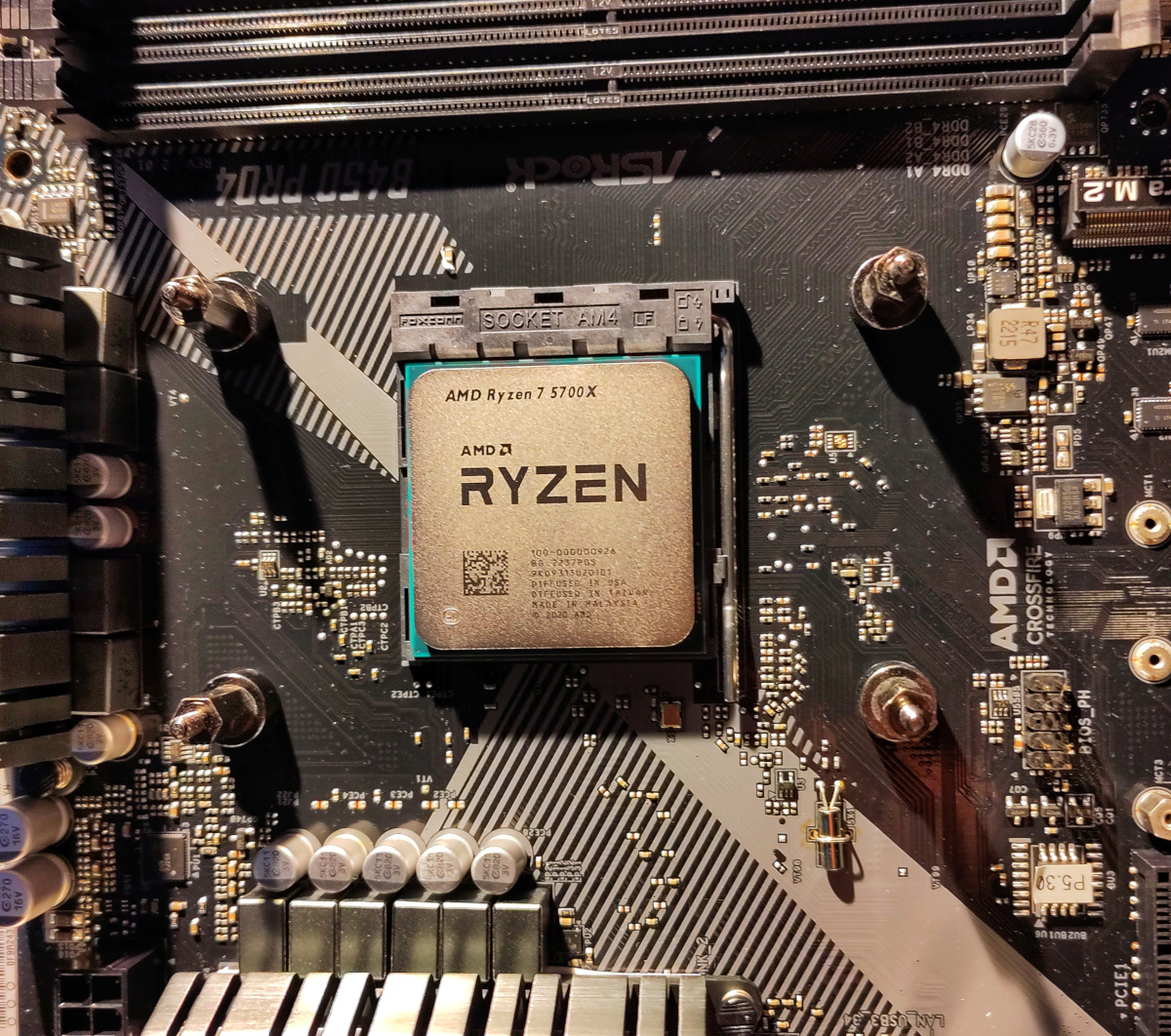In my last post I mourned the death of my old battlestation. But life goes on, and it was anyways time to upgrade my workstation to something more modern.
After about a week I decided to upgrade the workstation to a modern Ryzen platform. I settled for the 5700X because it’s a powerful CPU at the 65W level and not yet higher rated - With 8 cores and up to 4.6 GHz this is more than enough horsepower for the things that I typically do. It’s a beast compared to my good old (TM) Piledriver, which did a good job until the end.
The nonexisting market for just “normal” stuff
The most difficult task was to find a suitable mainboard without all that flashy fancy gaming enhanced bla bla bla stuff (TM). Honestly, it would be hilarious if it wouldn’t be true - there is just so much crap out there! Mainboard with extra heat sinks that get in the way of placing perihperal devices, an actual lack of PCIe slots, RGBs that get in the way, UEFI settings for overclocking and whatnot …
The market segment for people who just want to have a decent workstation without all of that crap is very niece, if not nonexisting. Gaming is apperently the only market where I can get somehow okayish stuff from and all of them have a fancy sticker all over them. sigh.
I finally settled for the AsRock B450 Pro4 R2.0. It looks to me like a decent layout for about 100 bucks. It has enough peripheral connection to work with, and the amount of gaming enhanced crap is okayish.
Memory-wise I settled for DDR4 and bough two Kingston Fury Beast (2x16 GB) for a total amount of 32 GB. I tend to not buy any memory with heat sinks or fancy stuff because they don’t need it if you have non-crappy cooling. Here those were available and they are also ok. I do a lot of virtualization stuff, so having a decent amount of RAM is important for me. DDR4 is just fine for my needs, I don’t need DDR5, which is considerably more expensive.
Those were all the upgrades that I bought. Excluding the new Windows 10 Pro license I paid in total about 500 Euros. That’s OK, given that I upgraded the machine likely to be more than twice as fast and more power efficient.
Upgrading your system is good for you, and the planet
I re-used most of the components from my old workstation: GPU, SSDs and hard disks, chassis, cooling, power supply and all other peripherals like the removable media bay.
Not only allowed me this to have a decent upgrade for about 500 bucks, but it also meant that I’m not causing excessive amount of unnecessary hardware waste. The only parts that I trashed is the CPU and the mainboard because one of them is dead. Everything else stays in service!
And this does make a difference! I upgrade stuff once it breaks beyond repair or when it gets too old. The latter rarely happens, as I tend to use stuff as long as possible.
Using your stuff as long as you can, and repair it whenever possible is one of the biggest impacts that we can have on our ecological footprint. Nothing is as ecological efficient as not buying new things and keep using what you have.
Apart from the ecological impact it’s also a huge cost saving, because you can upgrade failed components individually. This is one of the reasons why I’m so much against the deeply integrated and soldered components that make you trash a complete device in case of individual component failure. This is bad for the users and the planet. I try to avoid such devices whenever I can. It’s a crime and I’m not buying into the necessity of the advantage for the consumers.
Keep things repairable, modular so that you can exchange, upgrade and repair individual components. That’s good for you, your pocket and the planet.
Cheers!

New CPU, ready to rock for years to come 😃
